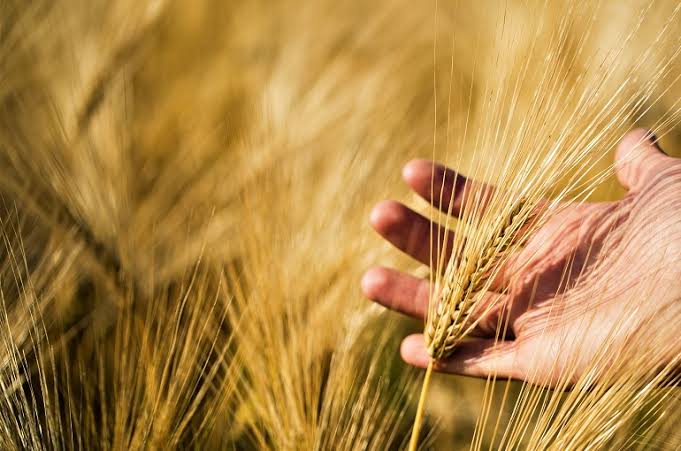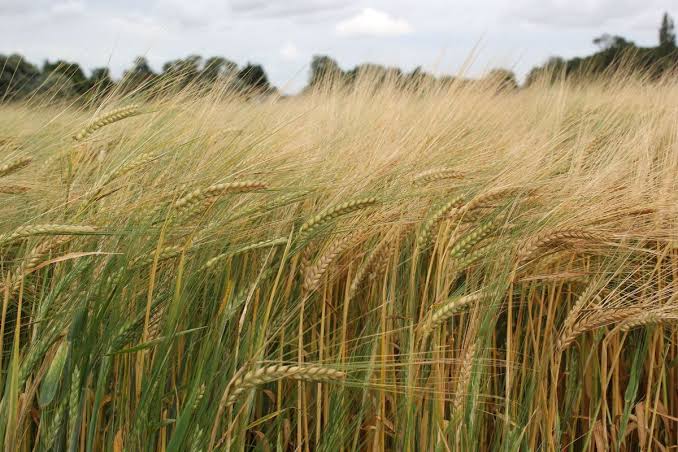What are the Best Varieties of Barley to Grow in my Climate?
Barley in Climate; Barley is a versatile cereal grain that adapts well to various climates, and there are different varieties of barley. Growing barley is influenced by the climate in which it is cultivated. Understanding the impact of climate on barley cultivation is crucial for successful yields.
In regions with cool climates, barley thrives. It prefers temperatures between 60 to 70 degrees Fahrenheit (15 to 21 degrees Celsius) during the growing season. Cooler temperatures promote the development of barley plants, ensuring a healthy and robust crop.
Rainfall is another vital factor for barley cultivation. Barley requires well-distributed rainfall throughout its growth stages. Adequate moisture is crucial for germination, establishment, and grain development. In areas with insufficient rainfall, supplemental irrigation may be necessary to ensure optimal barley growth.
Barley is known for its adaptability to diverse climates, including both dry and humid conditions. In arid regions, where water scarcity is common, barley varieties with drought tolerance are preferred. These varieties can withstand periods of water stress and still produce satisfactory yields.
Proper soil management is essential for successful barley cultivation. Well-drained soils with good aeration are ideal for barley plants. Heavy clay soils can impede root development and water movement, negatively affecting barley growth. Therefore, selecting the right soil type and implementing effective soil conservation practices contribute to a thriving barley crop.
The length of daylight, also known as photoperiod, influences barley growth and development. Barley is a short-day plant, meaning it requires shorter days to initiate flowering. This characteristic makes it well-suited for cultivation in regions with distinct seasons, ensuring that the crop matures within the favorable timeframe.
Farmers often consider frost dates when planning barley cultivation. Barley is relatively cold-tolerant, but late spring frosts can harm emerging plants. By aligning planting schedules with local frost patterns, farmers can minimize the risk of frost damage and promote successful barley production.
Barley varieties are developed to suit specific climatic conditions. Breeders work to create barley cultivars with traits such as disease resistance, cold tolerance, and adaptability to varying environmental conditions. Choosing the right barley variety for a particular climate enhances the chances of a successful harvest.
However, growing barley is intricately linked to the climate in which it is cultivated. Factors such as temperature, rainfall, soil type, photoperiod, and frost dates significantly influence barley cultivation. Adapting cultivation practices based on the unique characteristics of a specific climate ensures a thriving barley crop, making it a valuable grain for farmers worldwide.
Read Also: Climatic and Environmental Requirements for Snails
What are the Best Varieties of Barley to Grow in my Climate?

To determine the best varieties of barley for your climate, it’s essential to consider the specific conditions in your region. Different barley varieties are bred to thrive in various climates, so selecting the right one can significantly impact your crop’s success.
Local agricultural extension offices or seed suppliers in your area can provide valuable insights into the most suitable barley varieties for your climate. They often have information on the performance of different cultivars in specific regions and can guide you in making informed choices.
Factors to consider when choosing barley varieties for your climate include:
1. Temperature Tolerance: Select barley varieties that align with the temperature range in your region. Some varieties are better suited for cooler climates, while others thrive in warmer conditions.
2. Disease Resistance: Choose varieties with resistance to common diseases prevalent in your area. This helps in reducing the risk of crop loss due to diseases that may be prevalent in your climate.
3. Drought Tolerance: If your region experiences periods of water scarcity, consider barley varieties with enhanced drought tolerance. These varieties can withstand dry conditions better and still produce satisfactory yields.
4. Soil Compatibility: Different barley varieties exhibit preferences for specific soil types. Ensure that the chosen variety is well-suited for the soil conditions in your area, whether it’s sandy, loamy, or clayey soil.
5. Growing Season: Barley varieties have varying maturation periods. Select a variety with a growing season that aligns with the length of your local growing season. This ensures that the crop matures within the optimal timeframe.
6. Local Recommendations: Seek advice from local farmers or agricultural experts who have experience with barley cultivation in your area. They can share valuable insights into which varieties have historically performed well.
By considering these factors and consulting with local experts, you can make informed decisions on the best barley varieties to grow in your specific climate. Keep in mind that ongoing research and breeding efforts may introduce new varieties, so staying updated on the latest recommendations is beneficial for successful barley cultivation.
Read Also: All you need to know about Achatina Marginata Breed of Snail
The Best Varieties of Barley to Grow

Selecting the best varieties of barley to grow depends on various factors, including climate, soil conditions, and specific agricultural goals. Here are some notable barley varieties known for their adaptability and performance in different environments:
1. Conlon: Recognized for its excellent malting quality, Conlon barley is often preferred by brewers. It adapts well to diverse climates and is known for its high yield potential.
2. Syngenta’s Laureate: This two-row spring barley variety is praised for its consistent yields and good disease resistance. Laureate is well-suited for regions with moderate climates and is a popular choice among farmers aiming for both malting and feed purposes.
3. CDC Copeland: Widely grown in North America, CDC Copeland is a six-row malting barley known for its high yield potential and good disease resistance. It thrives in cooler climates and has a strong track record in malting quality.
4. RGT Planet: Developed for its strong disease resistance and high yield potential, RGT Planet is a two-row barley variety suitable for a range of climates. It is often favored for its good agronomic performance.
5. Spartan-6: Ideal for regions with shorter growing seasons, Spartan-6 is a six-row malting barley with good cold tolerance. It offers reliable yields and has shown resilience against various diseases.
6. Planet: Planet barley is known for its adaptability to diverse soil types and climates. It is a popular choice for both malting and feed purposes, offering a balance between yield and quality.
7. CDC Austenson: Developed for its strong disease resistance, CDC Austenson is a two-row malting barley that performs well in various climates. It is prized for its consistent quality and adaptability.
8. Tinka: Tinka barley is recognized for its excellent malting characteristics and adaptability to different climates. It is often chosen by farmers aiming for high-quality malt production.
9. Baronesse: This two-row spring barley is appreciated for its good agronomic performance and disease resistance. Baronesse is suitable for regions with varying climates and is commonly used for malting and feed.
10. Pinnacle: Pinnacle barley is known for its strong straw, making it resistant to lodging. It is well-suited for regions with fluctuating weather conditions and is favored for both malting and feed purposes.
When choosing the best barley variety for your specific circumstances, consider consulting local agricultural experts, seed suppliers, or extension services. They can provide region-specific recommendations based on factors like climate, soil characteristics, and intended end-use of the barley crop.
How to Care for Barley
Caring for barley crops involves attention to various aspects, from planting to harvest. Here’s a general guide on how to care for barley:
1. Planting: Choose a suitable planting time based on your local climate. Barley is often planted in the early spring or fall, depending on the variety and region. Ensure proper seedbed preparation with well-drained soil.
Plant seeds at the recommended depth and spacing, considering the specific requirements of the chosen barley variety.
2. Watering: Barley generally requires consistent moisture for optimal growth. Adequate watering during key growth stages, such as germination, tillering, and grain filling, is crucial. Be mindful of not overwatering, as excessive moisture can lead to diseases and affect grain quality.
3. Fertilization: Conduct a soil test to determine nutrient levels and apply fertilizers accordingly. Barley has varying nutrient needs during different growth stages, so follow recommended fertilization schedules.
4. Weed Control: Keep the barley field weed-free to minimize competition for nutrients and sunlight. Use appropriate weed control methods, such as herbicides or mechanical cultivation, while being mindful of potential impacts on the crop.
5. Disease Management: Monitor the crop regularly for signs of diseases. Barley can be susceptible to fungal infections. Choose disease-resistant barley varieties when possible. Employ fungicides or other recommended control measures if diseases are identified.
6. Pest Control: Watch for pests like aphids, armyworms, or grasshoppers, which can impact barley crops. Implement integrated pest management strategies, incorporating natural predators and, if necessary, targeted pesticide applications.
7. Supporting Growth: Consider using nitrogen-fixing cover crops in rotations to enhance soil fertility. Barley may benefit from support against lodging, especially in regions with heavy rainfall or strong winds. Choose varieties with good straw strength.
8. Harvesting: Time the harvest when the grain has reached the desired moisture content. This typically occurs when the crop has turned golden and the moisture content is around 12-14%. Use appropriate harvesting equipment, adjusting settings for optimal grain yield and quality.
9. Post-Harvest: Properly store harvested barley to prevent moisture-related issues and maintain grain quality. Rotate barley crops in your field to manage disease and pest pressures over the long term.
10. Continuous Monitoring: Regularly monitor the barley crop throughout its growth cycle for any signs of stress, diseases, or nutrient deficiencies. Stay informed about local weather patterns and adjust management practices accordingly.
Adapting these care practices to your specific climate and local conditions will contribute to successful barley cultivation. Always refer to local agricultural extension services or experts for tailored advice based on your region’s unique characteristics.
Read Also: Your Role as a Consumer, Wage Earner, Citizen, and Who Benefits from a Business?









